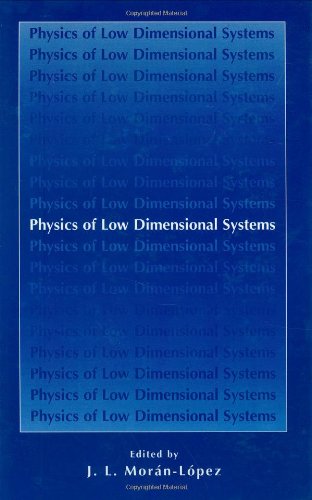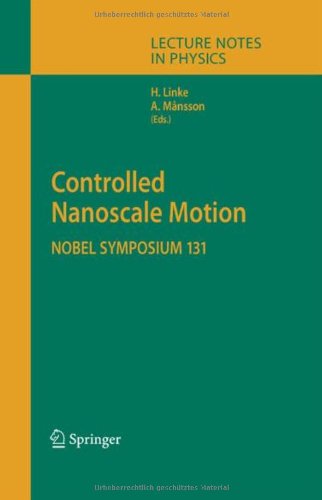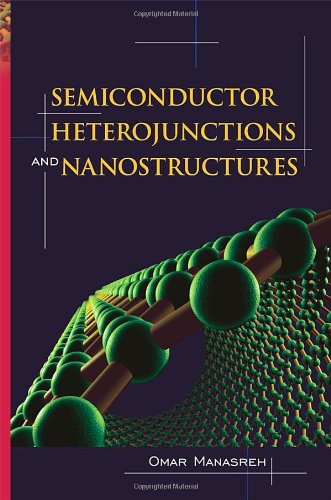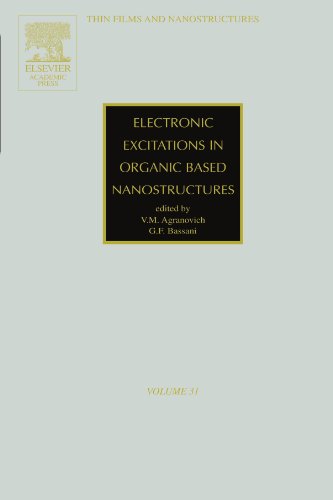Albano Cavaleiro, Jeff T. de Hosson9780387256429, 0387256423
Table of contents :
Contents……Page 11
1. Introduction……Page 21
2. Coatings……Page 22
3.1. Wear: The Role of Interfaces in Nanostructured Materials……Page 24
3.2. Friction: Size Effects in Nanostructured Coatings……Page 29
3.3. Tribological Properties: The Role of Roughness……Page 36
4. Leitmotiv and Objective……Page 41
Acknowledgments……Page 43
References……Page 44
1. Introduction……Page 47
2.1. Tensile and Compression Testing……Page 48
2.2. Indentation Testing: Experimental Technique and Computations……Page 50
2.3. Cantilever Bending……Page 53
3.1. Crystalline Materials……Page 54
3.2. Amorphous Materials……Page 73
4.1. Yield Stress and Hardening……Page 77
4.2. Cyclic Deformation……Page 83
5. Concluding Remarks……Page 86
References……Page 87
1. Introduction……Page 98
2. Deformation Mechanisms in Nanocrystalline Coatings: General View……Page 100
3. Lattice Dislocation Slip……Page 102
4. Grain Boundary Sliding……Page 105
5. Rotational Deformation Mechanisms……Page 109
6. Grain Boundary Diffusional Creep (Coble Creep) and Triple Junction Diffusional Creep……Page 113
7. Interaction Between Deformation Modes in Nanocrystalline Coating Materials: Emission of Dislocations from Grain Boundaries……Page 115
8. Defects and Plastic Deformation Releasing Internal Stresses in Nanostructured Films and Coatings……Page 117
9. Concluding Remarks……Page 121
References……Page 122
1. Introduction……Page 129
2. Atomistic Modeling……Page 131
2.1. Molecular Dynamics……Page 132
2.2. Steepest Descent and Conjugate Gradient Methods……Page 133
2.3. Interatomic Potentials……Page 134
2.4. Creation of Nanocrystalline Atomistic Configurations……Page 135
2.5. Atomistic Nanoindentation Simulation Geometry……Page 136
2.6. Atomistic Visualization Methods for GB and GB Network Structure……Page 138
2.7. The Time- and Length-Scale Problem……Page 140
3.1. Deformation Mechanisms in nc fcc Metals Derived from Tensile Loading……Page 141
3.2. Atomistic Mechanism under the Indenter……Page 142
3.3. Interaction of Dislocations with the GB Network……Page 146
3.4. The Ratio between Indenter Size and Grain Size……Page 149
3.5. Material Pileup……Page 154
3.6. Unloading Phase……Page 156
4. Discussion and Outlook……Page 158
References……Page 159
1. Introduction……Page 163
2.1. Materials……Page 166
2.2. Characterization with Electron Microscopy Techniques……Page 167
2.3. TEM Sample Preparation……Page 180
3.1. DLC Coatings……Page 182
3.2. Coated Systems……Page 183
3.3. Particles Inside an Amorphous Structure……Page 192
3.4. Defect Structure……Page 195
3.5. Mechanisms of Crack Propagation……Page 196
4.1. Transition Metal Nitrides……Page 201
4.2. Microstructural Features……Page 204
4.3. Formation and Microstructure of Macroparticles……Page 209
4.4. Nanoindentation Response……Page 212
5. Outlook……Page 219
References……Page 229
1. Introduction……Page 236
2. Theory of Indentation Measurements……Page 237
3. Influence and Determination of Instrument Compliance……Page 246
4. Influence and Determination of Indenter Area Function……Page 253
5.1. Thermal Drift Correction……Page 259
5.2. Zero Point Correction……Page 262
6.1. Consideration of Substrate Influence……Page 263
6.2. Sink-In and Pileup Effects……Page 270
7. Limits for Comparable Hardness Measurements……Page 271
8. Young’s Modulus Measurements with Spherical Indenters……Page 275
References……Page 278
1. Introduction……Page 281
2. The Addition of Aluminum to T[sub(M)] Nitrides……Page 283
3. Ternary Nitrides with T[sub(M)] Elements from the IV, V, and VI Groups……Page 287
4. The Specific Case of the Addition of Si to T[sub(M)] Nitrides……Page 290
5. Addition of Low N-Affinity Elements to T[sub(M)] Nitrides……Page 294
6.1. The Binary System W-X……Page 295
6.2. The Ternary System W–X–N……Page 299
7. Conclusion……Page 326
References……Page 327
1. Introduction……Page 335
3. Structural Models for Prediction of Amorphous Phase Formation……Page 338
4.1. T[sub(M)-Fe-C (T[sub(M)] = Ti, V, W, Mo, Cr) Thin Films……Page 343
4.2. W-T[sub(M)]-C (T[sub(M)] = Ti, Cr, Fe, Co, Ni , Pd, and Au) Thin Films……Page 347
5.1. Ternary T[sub(M)]-C/T[sub(M1)]-C Systems (T[sub(M)] = Group VA Metal; T[sub(M1)] = Group VIA Metal)……Page 352
5.2. Other Ternary T[sub(M)]-T[sub(M1)]-C Systems……Page 355
6. Thermal Stability of Sputtered Amorphous M1-M2-C Thin Films……Page 359
7. Conclusions……Page 362
References……Page 363
1. Introduction……Page 367
1.1. Possible Artifacts During Hardness Measurement on Superhard Coatings……Page 368
1.2. Requirements on the Thickness of the Coatings……Page 371
2. The Earlier Work……Page 372
3. Superhard Nanocomposites in Comparison with Hardening by Ion Bombardment……Page 375
4.1. The Design Concept for the Deposition of Stable Superhard Nanocomposites……Page 379
4.2. Properties of the Fully Segregated Superhard Nanocomposites……Page 389
5.1. The Role of Impurities……Page 401
5.2. Conditions Needed to Obtain Complete Phase Segregation During the Deposition……Page 405
5.3. Conditions Needed to Achieve Hardness of 80 to ≥ 100 GPa……Page 408
6.1. Recent Progress in the Understanding of the Extraordinary Mechanical Properties……Page 410
6.2. The Resistance Against Brittle Fracture……Page 412
6.3. High Elastic Recovery……Page 413
6.4. Ideal Decohesion Strength……Page 415
6.5. The Future Research Work……Page 416
7. Industrial Applications……Page 417
8. Conclusions……Page 418
References……Page 420
1. Introduction……Page 427
2.1. Low-Energy Ion Bombardment……Page 428
2.3. Structure of Films……Page 429
3. Microstructure of Nanocomposite Coatings……Page 433
4. Role of Energy in the Formation of Nanostructured Films……Page 435
4.1. Ion Bombardment in Reactive Sputtering of Films……Page 437
4.2. Effect of Ion Bombardment on Elemental Composition of Sputtered Films……Page 439
4.3. Effect of Ion Bombardment on Physical Properties of the Film……Page 441
4.4. Ion Bombardment of Growing Films in Pulsed Sputtering……Page 443
5. Enhanced Hardness……Page 446
5.2. Macrostress in Sputtered Films……Page 448
5.3. High-Stress Sputtered Films……Page 453
5.4. Low-Stress Sputtered Films……Page 454
6. Origin of Enhanced Hardness in Single-Phase Films……Page 461
7. Classification of Nanocomposites According to Their Structure and Microstructure……Page 463
8. Mechanical Properties of Hard Nanocomposite Coatings……Page 465
8.1. Interrelationships between Mechanical Properties of Reactively Sputtered Ti(Fe)N[sub(x)] Films and Modes of Sputtering……Page 467
8.2. Effect of Stoichiometry x and Energy E[sub(bi)] on Resistance to Plastic Deformation and Hardness of Reactively Sputtered Ti(Fe)N[sub(x)] Films……Page 468
9. Trends of Future Development……Page 470
References……Page 473
1. Introduction……Page 484
2. Measurement Techniques……Page 485
2.1. Biaxial Stress–Temperature Measurements……Page 486
2.2. Differential Scanning Calorimetry and Thermogravimetric Analysis……Page 488
3.1. Single-Phase Coatings……Page 490
3.2. Multiphase Coatings……Page 497
4.1. Single-Phase Coatings……Page 500
4.2. Multiphase Coatings……Page 503
5.1. Spinodal Decomposition……Page 509
5.2. Age Hardening……Page 513
6. Interdiffusion……Page 515
7.1. Alloying of Hard Coatings to Improve Oxidation Resistance……Page 517
7.2. Self-Adaptation by Oxidation……Page 519
8. Conclusions and Outlook……Page 520
References……Page 522
1. Introduction……Page 531
2. The Significance of H/E in Determining Coating Performance……Page 533
3. Practical Considerations for Vapor Deposition of Nanostructured Coatings……Page 537
4.1. Background to Metal Nanocomposite Films……Page 538
4.2. Design Considerations……Page 540
4.3. Materials Selection for Nanostructured and Glassy Films……Page 542
5.1. CrCu(N) and MoCu(N) Nanostructured Films……Page 546
5.2. CrTiCu(B,N) Glassy Metal Films……Page 548
6. Adaptive Coatings……Page 551
7. Summary……Page 553
References……Page 554
1. Introduction……Page 559
2. Growth of Superlattice Films……Page 560
3. Origin of Superhardening……Page 563
4. Mechanical Deformation and Wear Mechanisms……Page 565
5. Conclusions……Page 571
References……Page 572
1.1. Introduction……Page 575
1.2. Production Aspects……Page 577
1.3. Arc Bond Sputtering Interface……Page 582
1.4. Main Criteria Defining Superlattice Structure……Page 588
1.5. Texture and Residual Stress……Page 597
1.6. Mechanical and Tribological Properties……Page 603
2.1. Application-Tailored Superlattice Coating Family……Page 606
2.2. Superlattice Coatings Dedicated to Serve High-Temperature Applications……Page 607
2.3. Superhard Low-Friction Superlattice Coatings and Their Applications……Page 621
2.4. Nanoscale Multilayer Coatings Designed For Very Low Friction and Their Applications……Page 631
2.5. CrN/NbN Superlattice Coating Designed for High Corrosion and Wear Applications……Page 638
References……Page 658
D……Page 665
M……Page 666
S……Page 667
Z……Page 668







Reviews
There are no reviews yet.